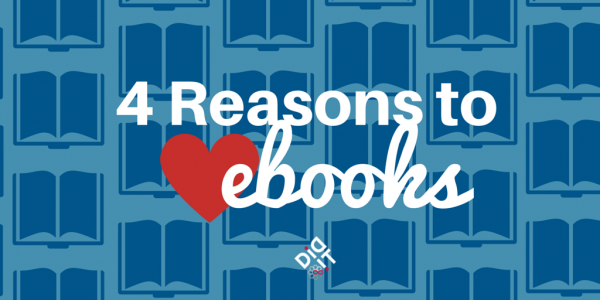
August 10, 2015: If you’re running a B2B site, you’re likely using content, SEO, and social media to attract visitors to your site’s pages. But even if your site, your social presence, and blog content are all compelling, the percentage of people taking the final step to conversion (typically by completing a contact form) is likely to be very small, because it’s usually very hard to move people from passive reading mode to any kind of action.
Many marketers solve this problem — and boost their conversion rates and lead flow — by introducing eBooks to their content mix. eBooks — typically Adobe PDFs — provide an intermediate “mid-funnel” bridge between awareness and active interest.
eBooks are:
1. Easy to make
Ebooks are easily produced using software your staff already likely uses. Content is typically written/edited in Microsoft Word, exported to PowerPoint — where images and graphical flourishes can be added — and “saved as” PDF. This file is uploaded to your site just like any other file. Of course, given the time in trouble you’ve put into your eBook, it’s likely that you’ll want people seeking to download it to give you something in return (usually their name, email, phone number, and perhaps additional data about the firm they work for). So you’ll need to add a form to the page hosting the eBook that will capture this information (WordPress users have a wide variety of forms plug-ins they can use to create forms that can be embedded in this page).
2. Easy to distribute
While high-speed connections aren’t universal, it’s likely that most of the people you’re trying to reach have connections fast enough to download even a 10 MB, 40-page eBook in just a few seconds. Adobe PDF is a near-universal distribution standard for documents today, so almost everyone will be able to read it.
3. An ideal way to bundle pre-existing content
If you’ve been blogging on any topic consistently for a year or more, you likely have enough material in your archives to populate an eBook. Take inventory of this intellectual property to determine which pieces already exist, which pieces must be created, and whether this content is still valid or needs updating. Develop a rough estimate of how much editing or additional writing might be required to transform it into an eBook (you might find that you’re a lot closer to your goal than you initially expected). Now the harder work begins: eBooks, just like real books, shouldn’t be regarded as a collection of chapters randomly slammed together. You will need to create an introduction, TOC (Table of Contents), and lay out your content elements in a way that flows logically from beginning to end. Don’t rush your eBooks out: people generally expect a higher level of quality from an eBook than from a blog article. Take the time to produce a quality product that will satisfy any prospect who downloads one.
4. Ebooks have real value
Ebooks don’t have as much perceived value as real books, but they are generally considered to have sufficient value for users to trade real information about themselves in order to get them. While you shouldn’t ever attempt to “short change” your users by offering them an ebook that’s nothing more than thinly designed sales copy, you don’t have to make your ebook a 200-page opus either. If your eBook is very high quality, you might even consider putting it up on Amazon, using Amazon’s KDP self-publishing program. Given that millions of searches are performed each day on Amazon — and that eBooks in many business verticals are subject to low or moderate competition — your title might reach an audience that it otherwise wouldn’t if simply placed on your own site.
Ebooks are an excellent way to move people “down the funnel” from passive reader to engaged converter. These tasty information lures can help you catch the right kind of fish, which is why I strongly recommend that you add them to your current
- 10 Mistakes to Avoid When Using QR Codes for Marketing - September 20, 2023
- Kevin Lee on How AI Changes the SEO Landscape - August 31, 2023
- The Power of Compound Marketing: Kevin Lee Presents @ 1MediaWorld 2023 Global Conference - March 7, 2023
